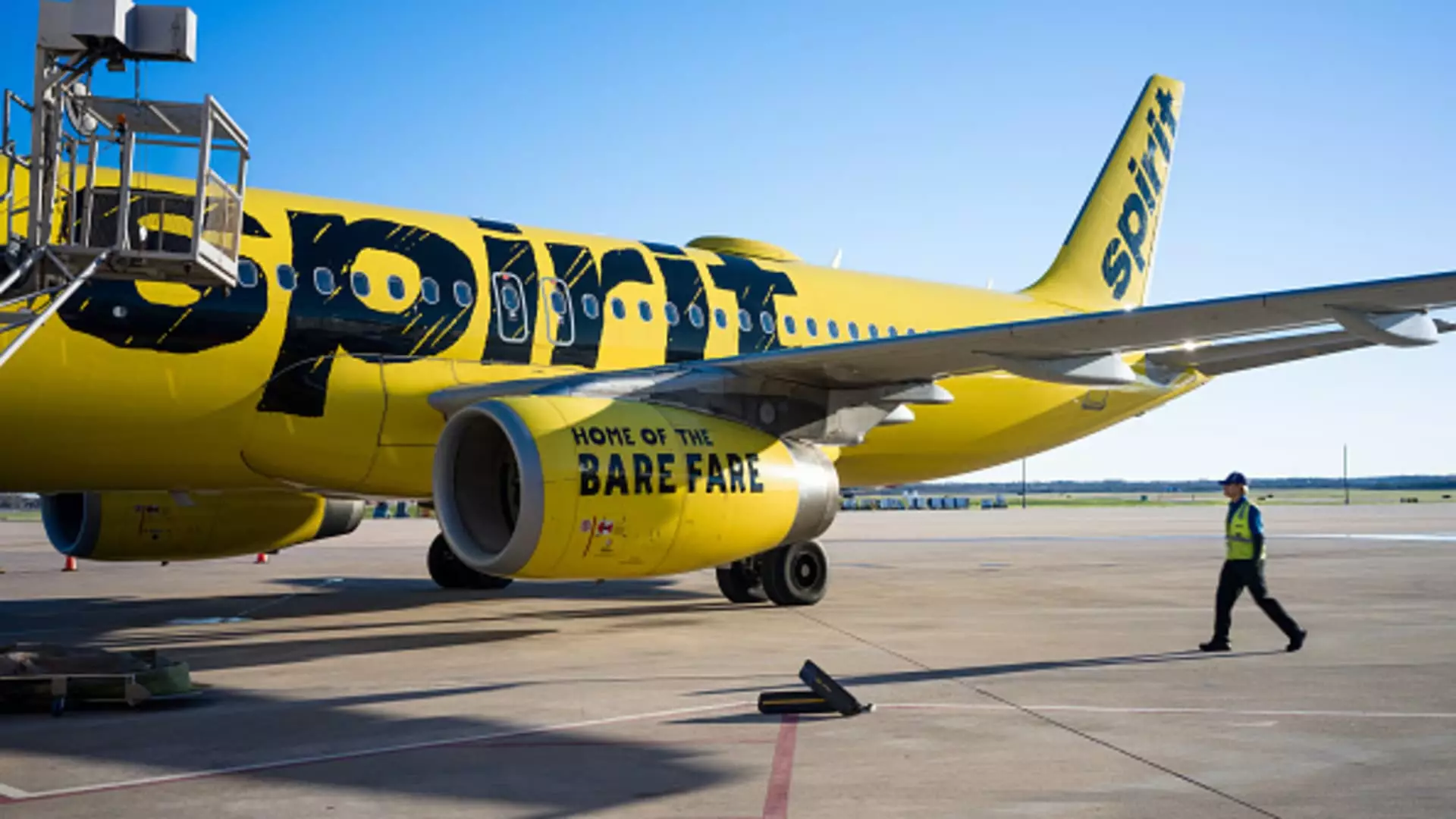On Friday, Spirit Airlines took a significant step towards stabilizing its financial situation by announcing an agreement with its credit card processor to extend the timeline for debt refinancing until December. This decision was made just hours before Spirit faced an impending deadline. The announcement underscores the airline’s ongoing struggle with its financial obligations as it grapples with a challenging economic landscape, characterized by rising operational costs and declining revenues.
Earlier in the week, Spirit revealed that it had drawn the full amount of its $300 million revolving credit facility, which serves as a critical lifeline to maintain its liquidity. The airline projected it would finish the year with just over $1 billion in available cash. These figures are essential for the operational resilience of Spirit, particularly as the aviation industry faces multiple pressures, including underwhelming demand and increased competition.
Operational Challenges and Strategic Responses
Spirit has had to make difficult operational decisions in response to its financial woes. The airline has furloughed employees, significantly reduced its flight schedule, and postponed incoming aircraft deliveries. These measures are indications of a company aggressively trying to curb expenses while navigating through what appears to be an extended downturn.
Adding to its troubles, a significant number of Spirit’s aircraft are currently grounded due to a recall of Pratt & Whitney engines. This situation not only exacerbates the airline’s operational limitations but also poses a long-term risk to its service reliability and market competitiveness. The combined effect of operational cutbacks and a ground fleet has raised concerns regarding Spirit’s ability to attract and retain customers, which is crucial for generating revenue.
Stock Market Performance and Future Outlook
The financial struggles are reflected in Spirit Airlines’ stock performance. The airline’s stock has plummeted roughly 90% over the course of the year and has dipped nearly 40% just in October. Closing at less than $1.50 per share, this marks a new low for the company and raises alarms about investor confidence. Such a decline could restrict access to capital, making it even more difficult for the airline to fund its operations or invest in recovery strategies.
A glimmer of hope appeared earlier when Spirit was set to be acquired by JetBlue Airways, a deal intended to strengthen its market position. However, this acquisition was thwarted by a federal court ruling on antitrust grounds, which has left Spirit in a precarious situation and added to its turbulence. With these ongoing challenges, speculation has arisen regarding the potential for a bankruptcy filing, which would mark a drastic turn in the company’s trajectory.
Spirit Airlines finds itself at a critical juncture, facing mounting financial pressures and operational challenges. While the extension of its refinancing deadline offers some temporary relief, the underlying issues remain. The airline must navigate both its liquidity concerns and the fallout from canceled acquisitions and operational cutbacks if it hopes to revive its fortunes in a competitive and volatile aviation market. As the landscape evolves and investor sentiment shifts, the coming months will be crucial for Spirit Airlines in determining its future resilience and overall sustainability.

